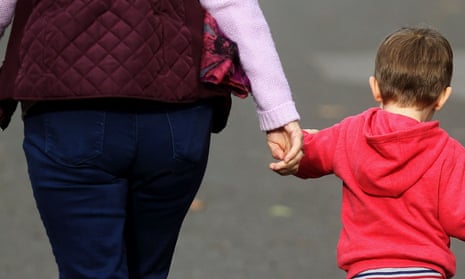One in six Australian children are living in poverty, according to a new UnitingCare Australia report.
The report into child social exclusion – commissioned from the University of Canberra’s National Centre for Social and Economic Modelling – blamed housing stress and labour market changes for “highly persistent” social exclusion.
UnitingCare will launch the report at Australian Parliament House on Monday at the start of Anti-Poverty Week.
The report used 2016 census data and other data including Naplan results to measure both child poverty – where family income falls below the poverty line – and the broader measure of child social exclusion, which includes socioeconomic, education, connectedness, housing and health metrics.
In 2016 17.2% of Australian children aged 0-14 years lived in poverty, it found. Excluding the Northern Territory, the highest rates of child poverty occurred in areas in Victoria outside of greater Melbourne (23.1%) and in New South Wales outside Sydney (18.9%).
Jurisdictions with significantly lower child poverty rates than the others included Queensland (15.7%), Tasmania (14.7%), the ACT (11.2%) and the urban areas of the Northern Territory (10.8%).
The report found that between the censuses in 2011 and 2016 “life became harder for all families owing to housing stress and labour market changes”. In 2016, nearly 35% of children living in areas where the risk of social exclusion was high lived in families experiencing housing stress.
Rising high school completion rates since 2011 counterbalanced that in part, helping to improve child social exclusion.
In 2016 the Northern Territory (43.1%) followed by Tasmania (34.1%) and South Australia (26%) had the highest prevalence of children at greatest risk of social exclusion.
The report found that a community’s risk of child social exclusion is “highly persistent over time”, with the geography of exclusion “remaining largely unchanged from 2011”.
87% of local communities with the highest risk of child social exclusion in 2011 remained in the same quintile for social exclusion in 2016.
The report recommended “significant government investment and action” to improve opportunities and resources in those areas.
Claerwen Little, UnitingCare Australia national director, said in a statement that “being excluded hurts children, families and the community”.
“This report provides strong arguments for holistic, preventative responses so that parents, carers and communities can better play their part in raising our children.”
In further comments to Guardian Australia, Little cited investment in early childhood education for children aged three to five as a preventative measure proven to have a high impact.
“It helps children without good supports at home to get ready for school, and that has an impact on high school completion and life outcomes,” she said.
Labor has announced a $9.8bn 10-year policy to extend early childhood education to three year olds and guarantee funding for four year olds, which the Coalition has attacked on cost grounds but not ruled out.
Little cited a national shortfall of at least 200,000 affordable homes and the “erosion” of social housing in the states as another policy area that required a strategy to improve social outcomes.
Little said the report showed that “data is like gold in helping to understand where investment is needed” and avoiding “piecemeal” responses to social exclusion.
“Disadvantage is much more than just poverty or lack of financial security.
“Limited social engagement, connection, access and opportunity are equally detrimental to health and wellbeing.”

Comments (…)
Sign in or create your Guardian account to join the discussion